“What’s more exciting though than it actually being Met Home is that it’s a magazine. And it’s really just starting what I want to push more, that artistic side of magazine making, not just cranking out a product on an assembly line, but finding ways to be artistic with the product. I think that’s what is going to set us apart from everything else that’s out there. We are an experience and we have to be more of that than ever now.” Newell Turner
“I believe the digital age allows for many wonderful things, but it also makes us so disconnected from reality in the digital platforms that to come back to this (print) is very special. And that’s what it should be actually.” Newell Turner
 Metropolitan Home returned to newsstands recently and while the magazine is uniquely modern and contemporary for today’s fast-paced world, the familiar urban appeal is back as the magazine hones in on its original DNA very successfully. The man who began his career , in his own words, on the lowest possible rung of the original Met Home’s ladder, is back, only this time, he’s at the top of the masthead, bringing his passion for the brand along with him. I spoke with Newell Turner on a recent trip to New York and we talked about the magazine that began it all for him. And how excited he is to see it return.
Metropolitan Home returned to newsstands recently and while the magazine is uniquely modern and contemporary for today’s fast-paced world, the familiar urban appeal is back as the magazine hones in on its original DNA very successfully. The man who began his career , in his own words, on the lowest possible rung of the original Met Home’s ladder, is back, only this time, he’s at the top of the masthead, bringing his passion for the brand along with him. I spoke with Newell Turner on a recent trip to New York and we talked about the magazine that began it all for him. And how excited he is to see it return.
As a former student of mine, Newell’s talents and creative capabilities are something that I have witnessed first-hand and as his career has developed and grown over the years, I have been amazed by the strides of excellence and above all, savviness that he has shown in everything that he has done.
I was excited to hear the prognosis for Met Home’s future and the clear vision that this pilot issue has given for the forward-movement of the brand. So without further ado, I give you the Mr. Magazine™ interview with a man who knows Met Home better than anyone else on the planet, Newell Turner, Editor-in-Chief and Hearst Design Group Editorial Director.
But first, the sound-bites:
 On how it feels to have started at the bottom rung of the magazine’s (Metropolitan Home) masthead and to now be at the very top of it: Right, I was at the lowest rung. (Laughs) I show my editorial assistants now; look, I didn’t even have a title when I started on the masthead; I was below the address. So, stop complaining about titles around here. (Laughs again) There are moments where I’ve thought about it; I feel a huge responsibility to it, because as you know, in the beginning I was there with Dorothy (Kalins), who was the founder of the magazine, and the magazine had such a passion, back to that word again that I feel like we’ve really tried to infuse this with. And I wanted to bring that passion, not only for the magazine, but to build a passion with the audience for the magazine.
On how it feels to have started at the bottom rung of the magazine’s (Metropolitan Home) masthead and to now be at the very top of it: Right, I was at the lowest rung. (Laughs) I show my editorial assistants now; look, I didn’t even have a title when I started on the masthead; I was below the address. So, stop complaining about titles around here. (Laughs again) There are moments where I’ve thought about it; I feel a huge responsibility to it, because as you know, in the beginning I was there with Dorothy (Kalins), who was the founder of the magazine, and the magazine had such a passion, back to that word again that I feel like we’ve really tried to infuse this with. And I wanted to bring that passion, not only for the magazine, but to build a passion with the audience for the magazine.
On the original title of Apartment Life: It was the early 70s, maybe ’73 or ’74, and it was Apartment Life for a while. We kept that rubric, the phrase Apartment Life is still the rubric; it’s our small space column, and we’re just really going back to the brand and looking at what it was and what it wanted to be, and seeing a void in the market for that very concept.
On recreating the moment that he found out that Met Home was going to relaunched: When we bought Lagardère, I emailed David (Carey) the next day and said, hey, by the way, did we get Metropolitan Home, which it had been a part of the company, but it had been closed. And he said that he had no idea, because we had gotten a huge amount of property content when that purchase happened, so many real magazines, but then a lot of archival material as well. About a week later he emailed me back and said yes, we did get Metropolitan Home and that was right about the time that I was reorganizing or creating the Hearst Design Group. So, it was immediately on my horizon as an opportunity to grow the Group in a few years. But about a year and half ago Michael Clinton came to one of our issue previews and said, hey, by the way Newell, what about Metropolitan Home? (Laughs) I said, well, it’s on my horizon. And he said that he thought there was a white space for that market and we should look at it.
On how he manages to handle the Design Group and four magazine titles: First of all, you have great people (Laughs), you hire really good editors in chief, because the editors in chief are the ones still primarily responsible for their magazines. As a group, both as a business and as a product going out there and creating content, we have much more strength as a group than we do individually. So, we are doing versions of this throughout Hearst, but we’re the only group that is truly integrated. None of the other groups are as integrated as we are, staffing-wise and production-wise.
On the only constant, besides change, in this business: What’s the only constant? Hopefully, beautiful content and beautiful products. I hope creativity; I actually want to believe that creativity is going to grow out of all of this. What we’ve already done is engage people in new ways.
On when that first relaunched issue of Metropolitan Home hit his desk: I didn’t want to look at it anymore. (Laughs) I was tired of it already. I was already thinking about the next issue. It makes me very happy to see it. I look at it; it looks very new to me, but it also looks very familiar as the magazine that I started at. It was also fun to work on because it was really only four of us working on this project full-time, and so I played many roles. I got to do everything from assigning, copy editing, pulling products for product stories, and it was fun to reengage on all of those levels.
 On whether the “At Last” phrase on the cover of the magazine was for him: “At Last?” No, that’s for all of the people; the Facebook fans that have a following. I think there is a club called “We Miss Met Home.” It is a little bit for me, I suppose, “At Last” it’s back. I was very sad when it closed. I felt like it had just drifted for a long time with not a lot of effort put into it. And for something that had begun with so much passion and such an exciting staff, to see it drift and just fade away was really sad to me. So, it is exciting to bring it back.
On whether the “At Last” phrase on the cover of the magazine was for him: “At Last?” No, that’s for all of the people; the Facebook fans that have a following. I think there is a club called “We Miss Met Home.” It is a little bit for me, I suppose, “At Last” it’s back. I was very sad when it closed. I felt like it had just drifted for a long time with not a lot of effort put into it. And for something that had begun with so much passion and such an exciting staff, to see it drift and just fade away was really sad to me. So, it is exciting to bring it back.
On whether artistic differentiation s the future of magazine publishing: Yes, I think that we’re not an algorithm, gathering product like so much of the content on the web is. I’m also going to say more and more that I could care less about three trillion eyeballs seeing this. I would much rather have 300,000 and 800,000 readers. I think a smaller, special, more passionate audience is the future.
On what he believes is the power of print in this digital age: The art side of me, the passionate side of me, loves the feel of a magazine. And I love the experience of holding it and studies say that people retain more when they’re holding a magazine. I think that what’s wonderful today is that as a journalist we don’t have just one platform to tell a story on and I feel like we in print are only just beginning to understand the opportunities on all of the platforms.
On anything else that he’d like to add: I want to believe that we’re only just beginning to experiment and push the creative side of it. I had wanted to do more and I think that we’ve done a lot in this issue, but I really want to push that and play with it more, whether it’s a combination of special papers or really tapping into the creative photography and writing, I really want to push all of that.
On what someone would find him doing if they showed up unexpectedly to his home one evening: Consuming media on multiple platforms simultaneously. (Laughs) Watching television, usually something I recorded, because I can’t stand the commercials and I fast forward through them, reading a magazine or a newspaper with my iPhone or iPad at hand, either looking up or going back and forth, reading things on different subjects.
On what keeps him up at night: My iPad; I go to bed with the iPad. I start reading and then I just can’t stop and it goes from one thing to the next. I’m not worried about publishing and that may sound really cocky and over-confident, but I really do feel like there’s a future for the size and the kind of magazine, not specifically Metropolitan Home, but this kind of focused magazine. I believe there is a real future for it.
And now the lightly edited transcript of the Mr. Magazine™ interview with Newell Turner, Editor-in-Chief and Hearst Design Group Editorial Director.
 Samir Husni: How does it feel to produce a magazine that when you began, your name was at the lowest end of the masthead, but it’s now at the top of that masthead; how does that feel to you?
Samir Husni: How does it feel to produce a magazine that when you began, your name was at the lowest end of the masthead, but it’s now at the top of that masthead; how does that feel to you?
Newell Turner: Right, I was at the lowest rung. (Laughs) I show my editorial assistants now; look, I didn’t even have a title when I started on the masthead; I was below the address. So, stop complaining about titles around here. (Laughs again)
There are moments where I’ve thought about it; I feel a huge responsibility to it, because as you know, in the beginning I was there with Dorothy (Kalins), who was the founder of the magazine, and the magazine had such a passion, back to that word again that I feel like we’ve really tried to infuse this with. And I wanted to bring that passion, not only for the magazine, but to build a passion with the audience for the magazine.
And I think that’s what Met Home had done so brilliantly. In the beginning it developed a relationship and an audience with the Baby Boom generation, and now we have this opportunity to do it for the next big group, meaning Gen X and first-wave millennials.
But to answer your question; it’s kind of astonishing. (Laughs) I like to tell people here, especially the youngest editors, who all today want a new title and a promotion after their first involvement in a story, way before they even produce a story by themselves; I tell them to keep putting one foot in front of the next and look at what can happen, just hang in there.
So, 30-plus years later, I got to bring back this magazine that started my career. And as I told Dorothy; we had spoken a couple of times about it and I had sent her a couple of issues, and I said that I really saw myself as going back to the DNA of the brand and rebuilding it from there, as opposed to where it was when it died. And she wrote me a really wonderful email back about that, because I feel like the magazine had kind of lost its position. It’s called Metropolitan Home, but most of the houses were suburban and country and weekend houses.
I wanted to bring it back to being very urban and more contemporary and that’s really coming right back to the heart of what it was in the beginning.
Samir Husni: For those who don’t know the history of Metropolitan Home; it started as Apartment Life.
Newell Turner: Yes, it did. We don’t have an exact date, because it didn’t have a frequency.
Samir Husni: Yes, it was an SIP from Better Homes and Gardens.
Newell Turner: Yes, and it was the early 70s, maybe ’73 or ’74, and it was Apartment Life for a while. We kept that rubric, the phrase Apartment Life is still the rubric; it’s our small space column, and we’re just really going back to the brand and looking at what it was and what it wanted to be, and seeing a void in the market for that very concept. And that’s what really happened.
Samir Husni: Can you recreate for me that moment when the hierarchy, whether it was David Carey or Michael Clinton who said first that they wanted to do this, to relaunch Metropolitan Home?
Newell Turner: Well, it didn’t happen quite like that. (Laughs) When we bought Lagardère, I emailed David (Carey) the next day and said, hey, by the way, did we get Metropolitan Home, which it had been a part of the company, but it had been closed. And he said that he had no idea, because we had gotten a huge amount of property content when that purchase happened, so many real magazines, but then a lot of archival material as well.
About a week later he emailed me back and said yes, we did get Metropolitan Home and that was right about the time that I was reorganizing or creating the Hearst Design Group. So, it was immediately on my horizon as an opportunity to grow the Group in a few years. But about a year and half ago Michael Clinton came to one of our issue previews and said, hey, by the way Newell, what about Metropolitan Home? (Laughs) I said, well, it’s on my horizon. And he said that he thought there was a white space for that market and we should look at it.
And that’s when Kate (Kate Kelly Smith) and I started thinking about and considering what we could do with it. From the business side, we were very careful not to create a product that would cannibalize the business of our other magazines in the Group, but instead, build something that would add to the portfolio and I think Met Home is going to play a big role in that, because we do a lot of cross-magazine sales to advertisers. We want advertisers to come to us with all of their advertising dollars and then let us cover the world for them in the shelter/decorating category.
So, that’s how it started really. Michael said let’s look at it and do it as a pilot, which is a new concept as far as I know; it’s new here at Hearst. It’s basically the same concept as it is in television. You create a product; you put it out there; you see how advertisers and consumers respond to it.
With advertisers, we sold out of ad pages, which was terrific. We did a consumer interest survey back in October; again, with no product, with no pages or images to show people, just testing reader memory of the title, Metropolitan Home, and also readers’ interests in contemporary and urban content and a magazine that would focus on that.
Interestingly, the results that came back aligned almost exactly with the demographic that we had theoretically gone out to capture. And that’s the median age of 38; household income of $150,000 and up; female/male ratio of like 70/30. All of which are very different from our other magazines, most shelter publications have a median age of readers in their 50s and the household income is much lower, except for Veranda, which is the highest in the category at around $124, 000 per household and then a much younger readership of 38.
The response rate of people interested came in at a median age of 38 for Met Home. So, that was a real strong indication that we were on the right path with something that we were creating. And then like I said, we didn’t have anything to put out there, we were just selling it with this brochure. And with advertisers, everybody was trying to figure out who and what the millennials are.
We started out, I would say, talking a little more millennial, but then as it evolved we realized that it’s Gen X that’s coming first, and they’re in their 40s and the ones who are really beginning to make serious decisions about homes and purchases for their homes. And in the process of going right at them, also build a relationship with the first-wave millennials.
I don’t know how much you’ve read about millennials, but everyone tends to talk about them as one big group, but there’s really a first and a second-wave, just like there was with the Baby Boomers. And the first-wave is in their 30s and they’re starting to make some purchases. Unfortunately for us, decorating is probably the last item on the disposable-income list of where they’re going to spend money, long after food, entertainment and clothing, but by their late 30s and 40s, most people are starting to make enough to at least think about some purchases for the home, if not make their first actual home purchase.
Samir Husni: Your group, the Design Group at Hearst, was started as an experiment, in terms of appointing one person, you to handle the group; you were heading three magazines and now you have four. They’re applying the same formula with Jay at Town & Country and Esquire. Is this the future, doing more with less? And how do you manage to handle all four titles now?
Newell Turner: First of all, you have great people (Laughs), you hire really good editors in chief, because the editors in chief are the ones still primarily responsible for their magazines. As a group, both as a business and as a product going out there and creating content, we have much more strength as a group than we do individually.
So, we are doing versions of this throughout Hearst, but we’re the only group that is truly integrated. None of the other groups are as integrated as we are, staffing-wise and production-wise.
As you know, we have three core teams, one for each magazine, of about six people per team. And then we have three large departments that work across all three magazines. We just decided, and I decided especially, that we’re going to have to take big steps if we’re going to get anywhere with this integration. We’re going to have to make big, bold moves and some things are going to work and some things aren’t. If it doesn’t work, we’ll step back a little bit, but as David has said, we’re never going back to where we were in the beginning.
And it was those big moves out of the gate that really got us to where we are and got us as integrated as we are. And really this integration, I think, is the future because our entire process of magazine making was antiquated on one hand, but yet working with all of the latest tools of the industry on the other. And no one had ever really stopped and asked: we have this to do it with, but we’re still doing it that way and does that make sense?
So, we had that rare opportunity that Hearst gave us to stop and literally just take it apart and scrub it is the best way to describe it. And honestly, it’s the first time in my entire life or my career that I’ve had a job description. There were no job descriptions in any of the magazines. And we wrote job descriptions for people and that may sound old-school, but it’s actually imperative for people so they can kind of understand what they do, especially now that we’re this integrated, because we’ve really cleaned up jobs, so we’ve really enabled people to focus on what they do and do best.
At the same time, the tools that we use have enabled people to do more and by that I should say that we’re going to be doing some new implementations here that are based on a model in Spain that we’re just starting to look at. But it’s really going to take advantage of the tools even more. To make what our employees are doing now work better.
Everything is changing so fast; it’s like today you’re doing it this way, and then two months later there’s a new way to do it and it’s a better way, but you’re still kind of holding on to some of the old ways and trying the new ways. You end up with these very overly-complicated processes that are neither here nor there and don’t work either way to their max.
Samir Husni: In this sea of change, what’s the only constant besides change?
Newell Turner: What’s the only constant? Hopefully, beautiful content and beautiful products. I hope creativity; I actually want to believe that creativity is going to grow out of all of this. What we’ve already done is engage people in new ways.
So, someone that typically edits just one magazine, and has for years, you want to keep your good employees, but year after year, they’re editing the same magazine; it’s got to get boring. And I’ve left jobs because I thought what I was doing was all I could do.
Now this person that I’m kind of making up is editing across all three magazines and during every monthly cycle is engaging in different ways with different core teams, different content, different voices and it just keeps the job interesting. And even though it’s more streamlined, there’s more variety and interest in it. Even people that we’ve had leave after we’ve done this have said this has been the most engaging and interesting experience of my career.
It’s worked really, really well. And it’s worked on all fronts, from the business side to the editorial side. We’ve had parts of it where employees have gone through a lot of changes, where staffing has changed. But for the most part we’ve pretty much held together.
Samir Husni: When that first issue of Met Home landed on your desk…
Newell Turner: I didn’t want to look at it anymore. (Laughs) I was tired of it already. I was already thinking about the next issue.
It makes me very happy to see it. I look at it; it looks very new to me, but it also looks very familiar as the magazine that I started at. It was also fun to work on because it was really only four of us working on this project full-time, and so I played many roles. I got to do everything from assigning, copy editing, pulling products for product stories, and it was fun to reengage on all of those levels.
I also think it’s healthy for me to reengage like that, because it reminds me of what people are actually doing and it helps me see how they’re jobs are working, where maybe I’ve been asking too much of some people, and where some people can do more.
And I want more creative voices writing for the magazine. There’s no reason we should be working with the same people over and over again. This gave us an opportunity for me to prove that you can bring in new voices and you don’t have to be this slave to some mythical voice that really isn’t a voice at all. It’s been so home that there’s no voice to it anymore.
We were looser in the editing process; we intentionally didn’t over edit people in putting this together, because I wanted to make the point to some of our team that you don’t have to work copy so hard, especially when you’re hiring great people to work for you and write for you. Let their voices come through.
We used Met Home and we’re still using it as an opportunity to try things and demonstrate things for the other magazines in the Group.
Samir Husni: Is it Newell’s passion from the heart, the “At Last” phrase on the cover?
Newell Turner: “At Last?” No, that’s for all of the people; the Facebook fans that have a following. I think there is a club called “We Miss Met Home.” It is a little bit for me, I suppose, “At Last” it’s back. I was very sad when it closed. I felt like it had just drifted for a long time with not a lot of effort put into it. And for something that had begun with so much passion and such an exciting staff, to see it drift and just fade away when it died was really sad to me. So, it is exciting to bring it back.
What’s more exciting though than it actually being Met Home is that it’s a magazine. And it’s really just starting what I want to push more, that artistic side of magazine making, not just cranking out a product on an assembly line, but finding ways to be artistic with the product. I think that’s what is going to set us apart from everything else that’s out there. We are an experience and we have to be more of that than ever now.
And weirdly, that’s just back to the beginning of magazine making. It’s where magazines started, as beautifully crafted, specially-made, limited production products.
Samir Husni: I still remember your design assignments from class, where you always differentiated yourself from the rest of the class technically, in terms of your artistic abilities and drawings of those images in your head. Is that the future of magazine publishing?
Newell Turner: Yes, I think that we’re not an algorithm, gathering product like so much of the content on the web is. I’m also going to say more and more that I could care less about three trillion eyeballs seeing this. I would much rather have 300,000 and 800,000 readers. I think a smaller, special, more passionate audience is the future.
I also feel really strongly about this, and I don’t even know if it relates to the conversation, but we have got to charge what we’re worth and stand by that price. We’re $9.99 on the newsstand and I’m not embarrassed about it. I don’t think that we’re going to have any issues with it, knock on wood. If we move forward and start with subscriptions, I don’t want discounted subscriptions. I received something out of my Instagram feed from Condé Nast Traveler, beautiful cover, six issues for $6, that is the most depressing and sad thing that I’ve ever seen. If we don’t value what we produce, then why do we expect the consumer to value it?
And that’s not in just magazine publishing, that’s in real estate; that’s in everything out there. And we have got to value it and charge what it’s worth and I think consumers will appreciate it then.
Samir Husni: What do you believe is the power of print in this digital age?
Newell Turner: Well, I’m multiplatform, so let me say, I’m an avid subscriber to Texture and I think that’s partly because I like to be able to get a magazine the moment I want it and not have to go in search for it on the newsstand.
The art side of me, the passionate side of me, loves the feel of a magazine. And I love the experience of holding it and studies say that people retain more when they’re holding a magazine. I think that what’s wonderful today is that as a journalist we don’t have just one platform to tell a story on and I feel like we in print are only just beginning to understand the opportunities on all of the platforms. And not just doing a video because you can do one on the website, but how do you tell a story on Snapchat? And not only how do you tell that story, but how do you make one that makes sense for Snapchat and your subject? In our case, a shelter/decorating magazine.
To me, the many platforms that we have to play with and the way that we can integrate them together and have them function independently are really exciting to me.
Samir Husni: That’s one of the things that I teach now-a-days, that media companies have to be platform agnostic. But you have to keep in mind that some of our audiences are platform specific.
Newell Turner: Much of our audience is still platform specific. I just think that in the digital age people are more attracted to tactile things than ever before. And I think that’s going to play to our advantage as the print platform, that desire to touch. That’s why we’re all playing with varnishes and textures on our covers to increase that sense of tactile quality.
I believe the digital age allows for many wonderful things, but it also makes us so disconnected from reality in the digital platforms that to come back to this (print) is very special. And that’s what it should be actually.
Samir Husni: Is there anything else that you’d like to add?
Newell Turner: I want to believe that we’re only just beginning to experiment and push the creative side of it. I had wanted to do more and I think that we’ve done a lot in this issue, but I really want to push that and play with it more, whether it’s a combination of special papers or really tapping into the creative photography and writing, I really want to push all of that.
I’ve used the analogy to HBO so much that it’s kind of boring, but we really have to be an amazing product like the HBO product is. Something that people are willing to pay for, and then enjoy the process of telling the stories the way you want to tell them, and not feeling like you have to win everybody with your first issue. Taking your time and pacing the magazine.
Samir Husni: If I showed up at your house one evening unexpectedly, what would I find you doing; reading a magazine, or your iPad; watching television, or something else?
Newell Turner: Consuming media on multiple platforms simultaneously. (Laughs) Watching television, usually something I recorded, because I can’t stand the commercials and I fast forward through them, reading a magazine or a newspaper with my iPhone or iPad at hand, either looking up or going back and forth, reading things on different subjects.
Samir Husni: Any final words of wisdom to the students majoring in journalism at your alma mater, Ole Miss?
Newell Turner: Yes, no job is too small. And getting your foot in the door is everything, and then being patient, and hopefully finding good mentors. I’ve had good mentors and I try to be a good mentor to my staff here. And I think that’s a wonderful aspect of business and our business in particular. And this is really important; I told one of my staff when I left another job, I said the one piece of advice I could give you is never burn a bridge, because in this business, we cross paths over and over again. It’s happened too many times. So, never burn a bridge in this business because you’re going to be working with people again and you don’t want to have that problem.
Samir Husni: My typical last question; what keeps you up at night?
Newell Turner: My iPad; I go to bed with the iPad. I start reading and then I just can’t stop and it goes from one thing to the next. I’m not worried about publishing and that may sound really cocky and over-confident, but I really do feel like there’s a future for the size and the kind of magazine, not specifically Metropolitan Home, but this kind of focused magazine. I believe there is a real future for it.
So, I’m not really worried about publishing. I think people are always curious and want to know more; people want to better their lives, it’s the American Dream, to have a better life. And we are one of the best platforms and products to help them get there. We’re kind of built into the American Dream. We believe in knowing everything and we want to have a better life and magazines provide the best way to get that.
Samir Husni: Thank you.




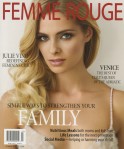
















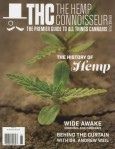




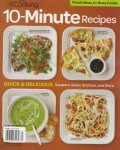

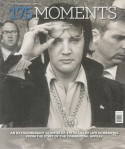












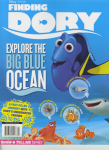
















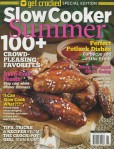










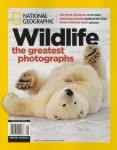








![Live Happy May_June Cover[5]](https://mrmagazine.me/wp-content/uploads/2016/05/live-happy-may_june-cover5.jpg?w=231&h=300)













